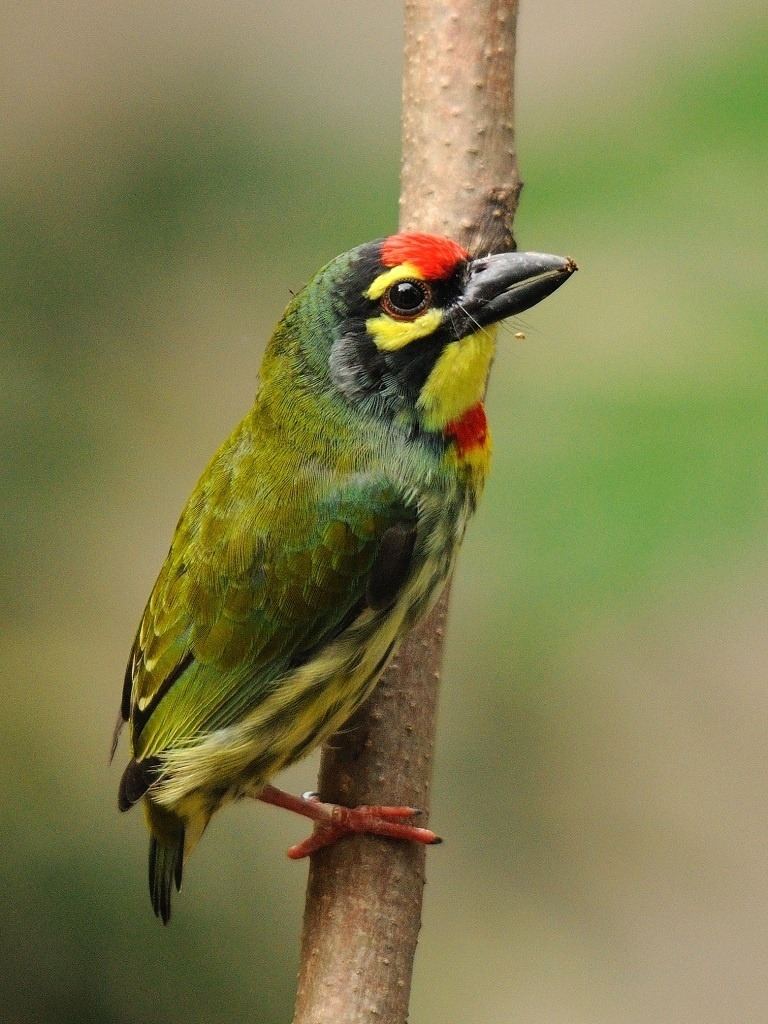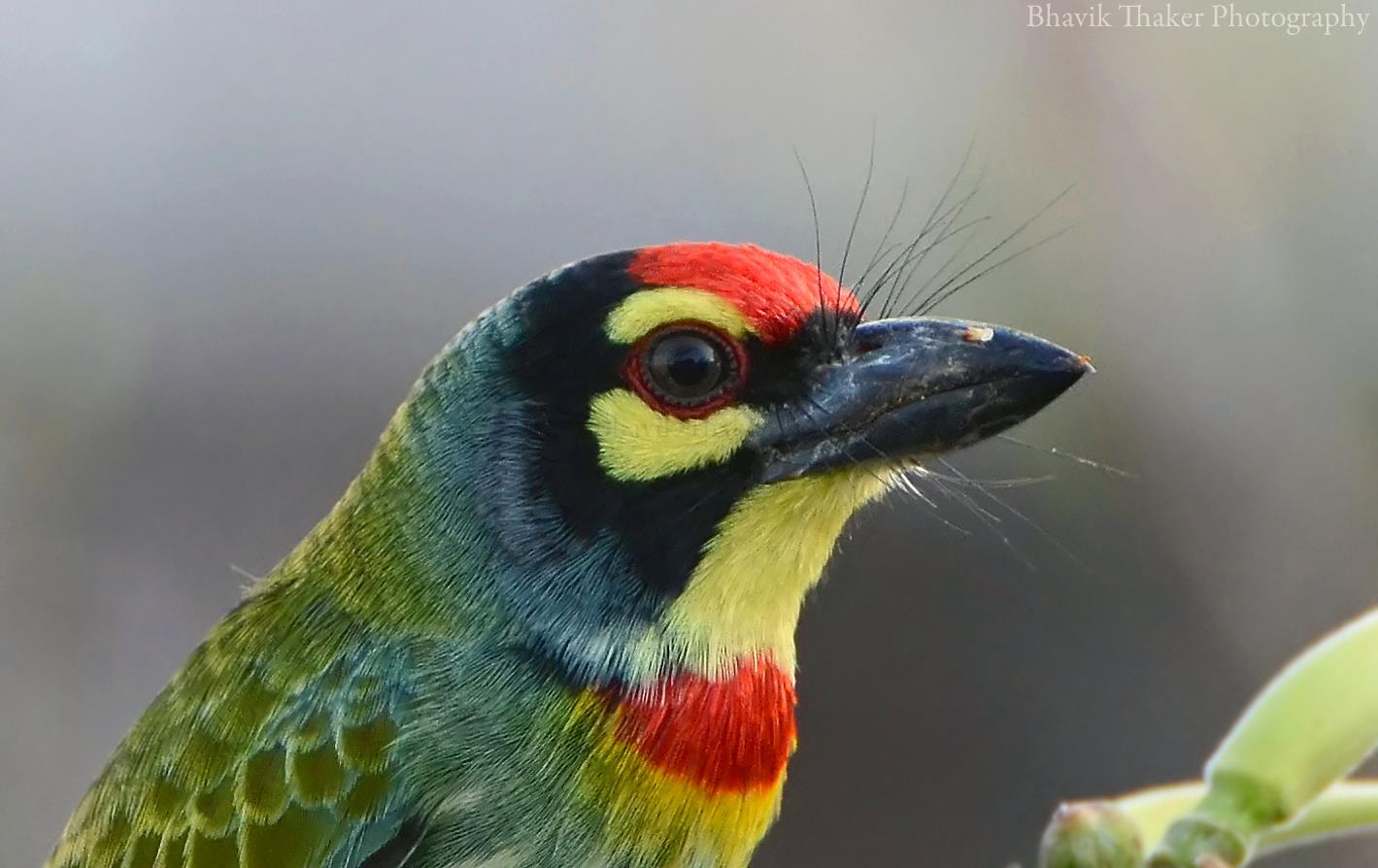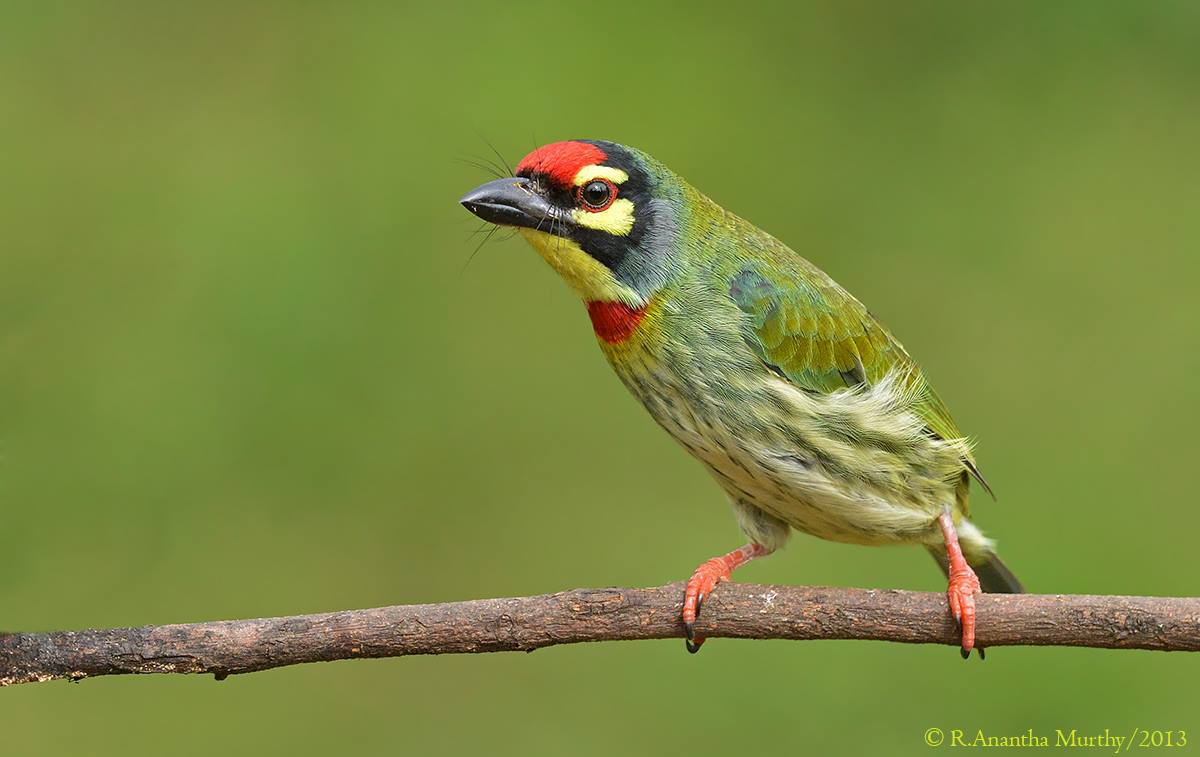
Megalaima haemacephala
TAXONOMY
Megalaima h. haemocephala Muller, 1776. Five subspecies.
OTHER COMMON NAMES
English: Crimson-breasted barbet; French: Barbu а plastron
rouge; German: Kupferschmeid; Spanish: Barbudo de Pecho
Rojo.
PHYSICAL CHARACTERISTICS
6.7 in (17 cm); 1.4–1.8 oz (39–52 g). Adult birds are unmistakable.
Upperparts are dark green; underparts are pale greenish
with broad, dark green streaks and a red band across the upper
breast. Forecrown is red; sides of head and throat are yellow;
eyestripe and submoustachial stripe are black.
DISTRIBUTION
Peninsular and northern India, northeastern Pakistan, Nepal,
Bangladesh, and Sri Lanka to southwestern China, Malaysia,
Sumatra, Philippines.
HABITAT
Forest edge, dry deciduous woodland, teak forest, irrigated orchards
and plantations with figs and other fruiting trees; also
town and city parks, gardens, ornamental trees, and edges of
mangroves.
BEHAVIOR
Sings frequently with synchronized jerk of body, bob of head,
and flick of tail; throat puffed out and jerk of head gives song a
ventriloquial quality: a monotonous “pohp-pohp” or “tonktonk”
all day and even on moonlit nights. Sound recalls metallic
hammering.
FEEDING ECOLOGY AND DIET
Forages in tree canopy and on fruiting trees, eating figs, pipals,
guavas, mangos, and custard apples as well as smaller berries and
many insects; taps and chips away bark to reach invertebrates.
REPRODUCTIVE BIOLOGY
Lays 2–4 eggs (usually 3) in hole excavated in tree; both parents
incubate for 14 days; chicks fledge after five weeks. Both
parents feed chicks but they are abandoned as soon as they
fledge, when female begins second brood.
CONSERVATION STATUS
Not threatened and very common in most of range.
SIGNIFICANCE TO HUMANS
Frequently heard and well known for its “hammering” song,
even in urban areas.
Other popular Animals
Photo Gallery of - Coppersmith barbet




 Animalia Life
Animalia Life